ASUS TUF A17 (FA706) review – a Ryzen 7 4800H at this price?
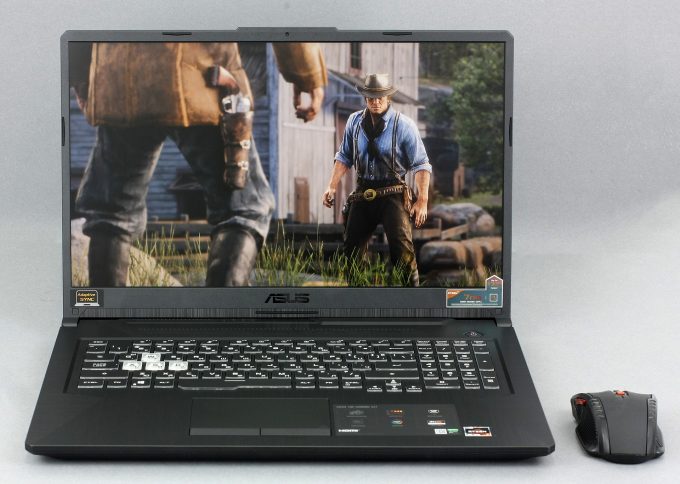 Finally, we were able to snatch a unit of the TUF A17 (F706). Better late than never, though, right? So, if you are not familiar with the brand new TUF A15 and A17, they are one of the first devices to come with the AMD Ryzen 4000H series 7nm processors. It is exactly the 7nm manufacturing process, that makes these CPUs so exciting. They are improved in pretty much every department in comparison to the previous generation AMD mobile processors, and the big selling point here is the core count.
Finally, we were able to snatch a unit of the TUF A17 (F706). Better late than never, though, right? So, if you are not familiar with the brand new TUF A15 and A17, they are one of the first devices to come with the AMD Ryzen 4000H series 7nm processors. It is exactly the 7nm manufacturing process, that makes these CPUs so exciting. They are improved in pretty much every department in comparison to the previous generation AMD mobile processors, and the big selling point here is the core count.
With 8 cores and 16 threads, the AMD Ryzen 7 4800H (which is exactly what we had in our unit) aims to provide the best price/performance of any mobile CPU on the market right now. In fact, even the 6-core AMD Ryzen 5 4600H should provide a decent amount of performance.
In addition to the obvious excitement over the processors inside of this machine, there is a trio of GPU options – starting from the GTX 1650, then the newly announced GTX 1650 Ti, and topping out with the GTX 1660 Ti. As of the display – there are two 1080p options – a 60Hz and a 120Hz one. Now, let’s focus on what is changed on the outside before we dig into the numbers.
You can check the prices and configurations in our Specs System: https://laptopmedia.com/series/asus-tuf-gaming-a17-fa706/
Contents
Specs Sheet
- HDD/SSD
- hasta 8000GB SSD + hasta 1000GB HDD
- Ranura M.2
- 2x 2280 M.2 NVMe slots Ver foto
- RAM
- up to 64GB
- OS
- Windows 10 Home, Windows 11 Pro, Windows 11 Home, Windows 10 Pro
- Batería
- 48Wh, 3-cell
- Material del cuerpo
- Plastic / Polycarbonate
- Dimensiones
- 399.2 x 268.9 x 23.3 ~ 26 mm (15.72" x 10.59" x 0.92")
- Peso
- 2.60 kg (5.7 lbs)
- Puertos y conectividad
- 1x USB Type-A
- 2.0
- 2x USB Type-A
- 3.2 Gen 1 (5 Gbps)
- 1x USB Type-C
- 3.2 Gen 2 (10 Gbps), DisplayPort
- HDMI
- 2.0b
- Wi-Fi
- 802.11ac
- Bluetooth
- 5.0
- Conector de audio
- 3.5 mm combo
- Features
- Lector de huellas dactilares
- Cámara web
- HD
- Teclado retroiluminado
- Altavoces
- 2 Speakers, DTS: X Ultra
- Unidad óptica
- Ranura de bloqueo de seguridad
- Kensington lock
Todo ASUS TUF Gaming A17 (FA706) configuraciones
What’s in the box?
Interesting. Inside the package, we didn’t only find the mandatory paper manuals and a 180W power brick. Instead, ASUS has included quite the amount of stickers, inspiring its users to personalize their device.
Design and construction
Probably the main reason they included the stickers is actually the updated visuals of the notebook. Instead of the rough, aggressive plastic finish on the lid last year, now they have opted for a sleek flat polished material (again plastic). In the middle of it, you can see the TUF logo, and there are four airplane-inspired elements (one on each corner). Now, the rest of the device is pretty game-ish. And although, this is not the most compact unit on the market, it has a profile of 23mm in the front and 26mm in the back, while the weight is 2.60 kg – not bad for a 17-inch beast.
Thankfully, the lid opens easily with a single hand, and there is a notch, which helps you to lift it. This also enabled ASUS to put a camera in the top bezel, which, together with the side bezels, is pretty thin. In terms of resistance – both the lid and the base are rigid enough.
Speaking of the base, as the tradition says, there is where the keyboard resides. It is a decent unit with good key travel and clicky feedback. However, the resistance of the keys is quite big, making the keyboard not so comfortable for typing. However, the gaming experience is great. Additionally it has an RGB backlight, transparent WASD keys, and a NumberPad section with slightly smaller keycaps than the rest.
Additionally, it is good to see that the “arrow” keys are pretty distanced from the main deck, making them more comfortable for use. However, they are significantly smaller than those of the Lenovo Legion Y540 for example. Next, there is the touchpad, which is a decent unit. Its gliding is fine, it has dedicated buttons, which are not too hard to press and have a satisfying click. Now, as of the rest of the material, it bears some similarities to the older TUF FX705, with the brushed plastic and the sabertooth detail. Respectively, the quality of the material shows some cost-cutting going on, and it attracts fingerprints as much as Dwayne Johnson attracts trouble in pretty much all of his movies.
Lastly, let’s take a quick look at the bottom plate. The material there indicates that there is a lot of space meant for ventilation, but if you look closer, the actual grills are pretty tiny – an interesting solution from ASUS. However, the hot air escapes the device from three different locations – two at the back and one on the right side. By the way, the fans draw some cool air through the keyboard as well.
Ports
I/O-wise, the TUF A17 (FA706) features a power plug, an RJ-45 connector, an HDMI 2.0b connector, two USB Type-A 3.1 (Gen. 1) ports, a USB Type-C 3.1 (Gen. 2) with a DisplayPort 1.4 output, and an audio jack on the left, while the right houses only a single USB Type-A 2.0 port.
Disassembly, upgrade options and maintenance
As usual, you need to unscrew 11 Philips-head screws in order to get inside of this device. Keep in mind that the top left one remains attached to the panel, and lifts it from the chassis. This is exactly where you want to start the prying process.
Interestingly, the behemoth Ryzen 7 4800H and the GTX 1660 Ti are cooled by only three heat pipes. More precisely, two of them are cooling both the CPU and the GPU, while the third one is meant to lower only the graphics card’s temperatures.
It is good to see that there are two RAM SODIMM slots, and according to ASUS, they support up to 32GB of DDR4 memory. However, when you look at the storage options, things get pretty – one 2.5-inch SATA drive slot, as well as not only one but two M.2 PCIe slots.
Lastly, there is a 48Wh battery in our unit. However, ASUS is selling this notebook with a 90Wh option, as well.
Display quality
ASUS TUF A17 (FA706) is equipped with a Full HD IPS screen, model number BOE NV173FHM-NX1 (BOE08BE). Its diagonal is 17.3″ (43.94 cm), and the resolution – 1920 х 1080. Additionally, the screen ratio is 16:9, the pixel density – 127 ppi, their pitch – 0.1995 x 0.1995 mm. The screen can be considered Retina when viewed from at least 69 cm (from this distance, the average human eye can’t see the individual pixels).
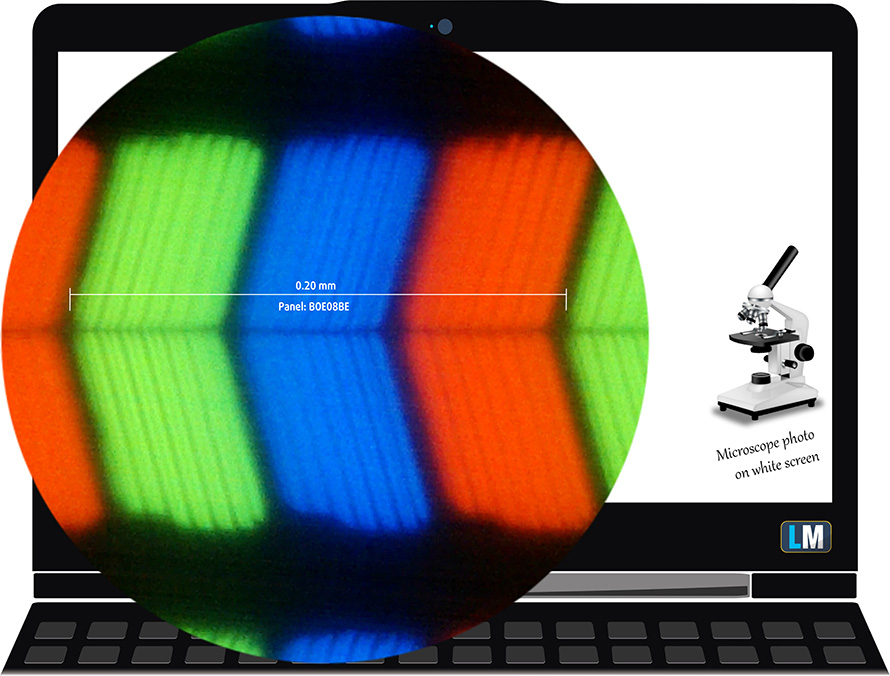
The viewing angles are comfortable. We have provided images at 45 degrees to evaluate quality.

The maximum measured brightness is relatively high – 283 nits (cd/m2) in the middle of the screen and 261 nits (cd/m2) average across the surface with a maximum deviation of 13%. The Correlated Color Temperature on a white screen and at maximum brightness is 7150K (average) – colder than the 6500K optimum for sRGB.
In the illustration below you can see how the display performs from uniformity perspective. The illustration below shows how matters are for operational brightness levels (approximately 140 nits) – in this particular case at 68% Brightness (White level = 139 cd/m2, Black level = 0.14 cd/m2).
Values of dE2000 over 4.0 should not occur, and this parameter is one of the first you should check if you intend to use the laptop for color-sensitive work (a maximum tolerance of 2.0 ). The contrast ratio is good – 970:1.
To make sure we are on the same page, we would like to give you a little introduction to the sRGB color gamut and the Adobe RGB. To start, there’s the CIE 1976 Uniform Chromaticity Diagram that represents the visible specter of colors by the human eye, giving you a better perception of the color gamut coverage and the color accuracy.
Inside the black triangle, you will see the standard color gamut (sRGB) that is being used by millions of people in HDTV and on the web. As for the Adobe RGB, this is used in professional cameras, monitors, etc for printing. Basically, colors inside the black triangle are used by everyone and this is the essential part of the color quality and color accuracy of a mainstream notebook.
Still, we’ve included other color spaces like the famous DCI-P3 standard used by movie studios, as well as the digital UHD Rec.2020 standard. Rec.2020, however, is still a thing of the future and it’s difficult for today’s displays to cover that well. We’ve also included the so-called Michael Pointer gamut, or Pointer’s gamut, which represents the colors that naturally occur around us every day.
The yellow dotted line shows ASUS TUF A17 (FA706)’s color gamut coverage.
Its display covers 52% of the sRGB/ITU-R BT.709 (web/HDTV standard) in CIE1976.

Our “Design and Gaming” profile delivers optimal color temperature (6500K) at 140 cd/m2 luminance and sRGB gamma mode.
We tested the accuracy of the display with 24 commonly used colors like light and dark human skin, blue sky, green grass, orange, etc. You can check out the results at factory condition and also, with the “Design and Gaming” profile.
Below you can compare the scores of ASUS TUF A17 (FA706) with the default settings (left), and with the “Gaming and Web design” profile (right).
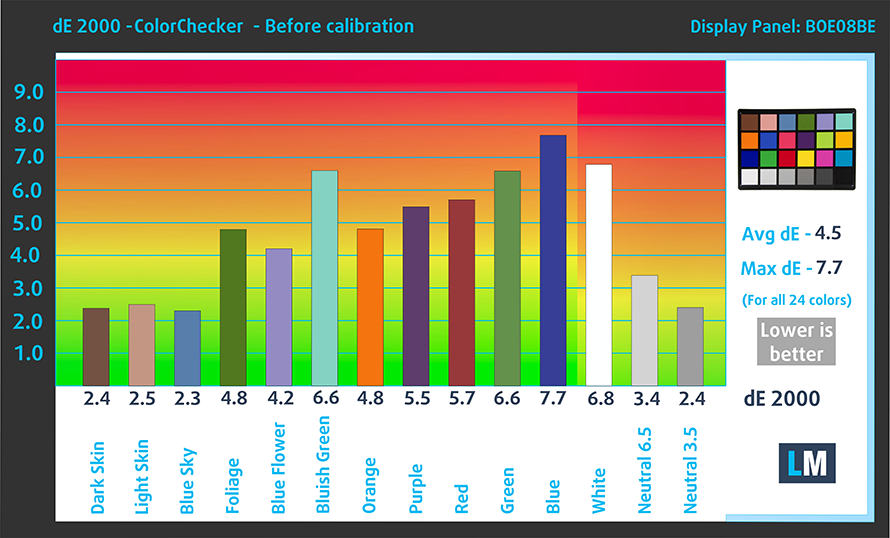
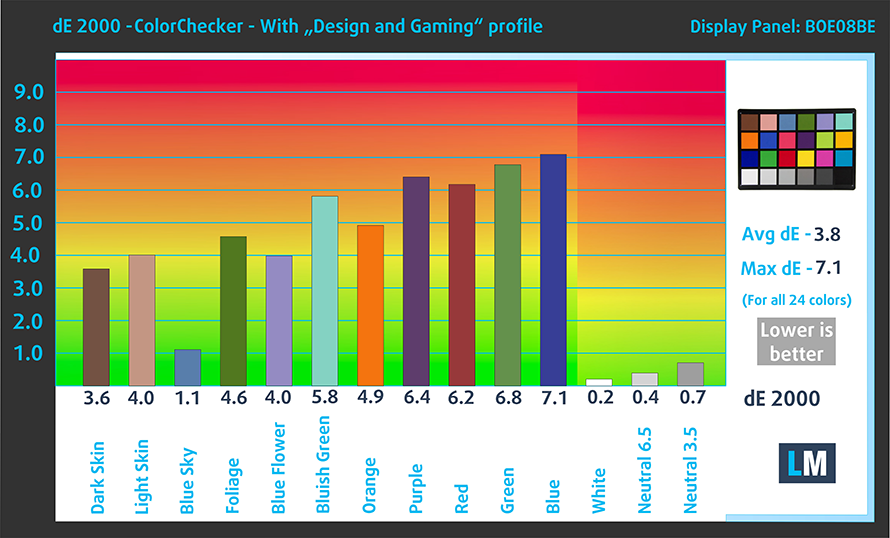
The next figure shows how well the display is able to reproduce really dark parts of an image, which is essential when watching movies or playing games in low ambient light.
The left side of the image represents the display with stock settings, while the right one is with the “Gaming and Web Design” profile activated. On the horizontal axis, you will find the grayscale and on the vertical axis – the luminance of the display. On the two graphs below you can easily check for yourself how your display handles the darkest nuances but keep in mind that this also depends on the settings of your current display, the calibration, the viewing angle, and the surrounding light conditions.
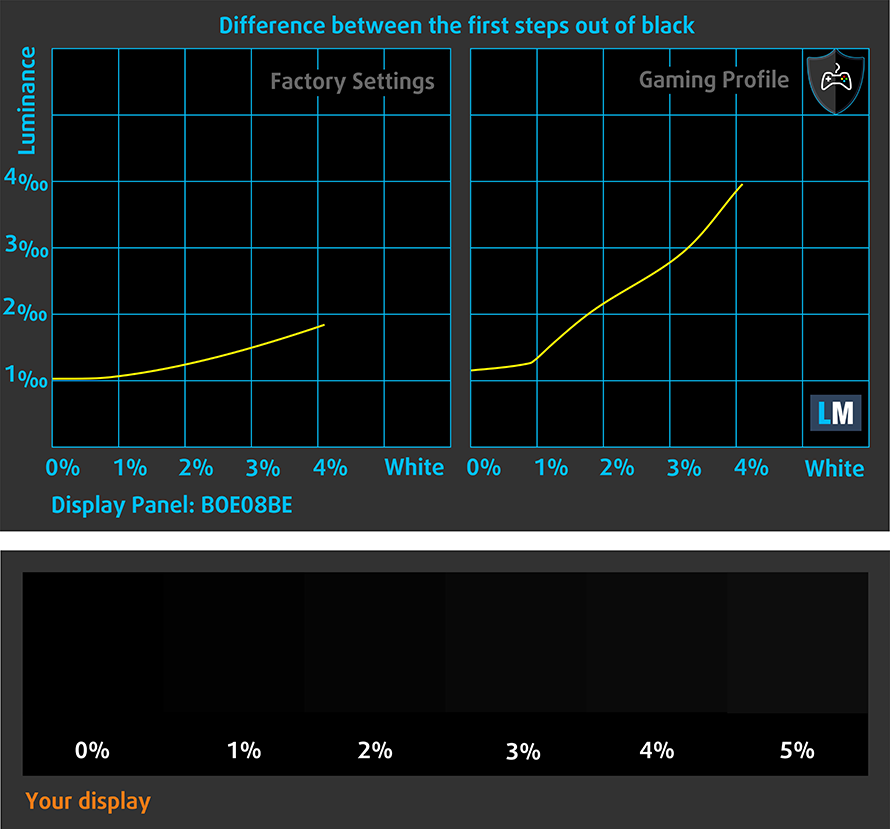
Response time (Gaming capabilities)
We test the reaction time of the pixels with the usual “black-to-white” and “white-to-black” method from 10% to 90% and vice versa.
We recorded Fall Time + Rise Time = 15 ms.
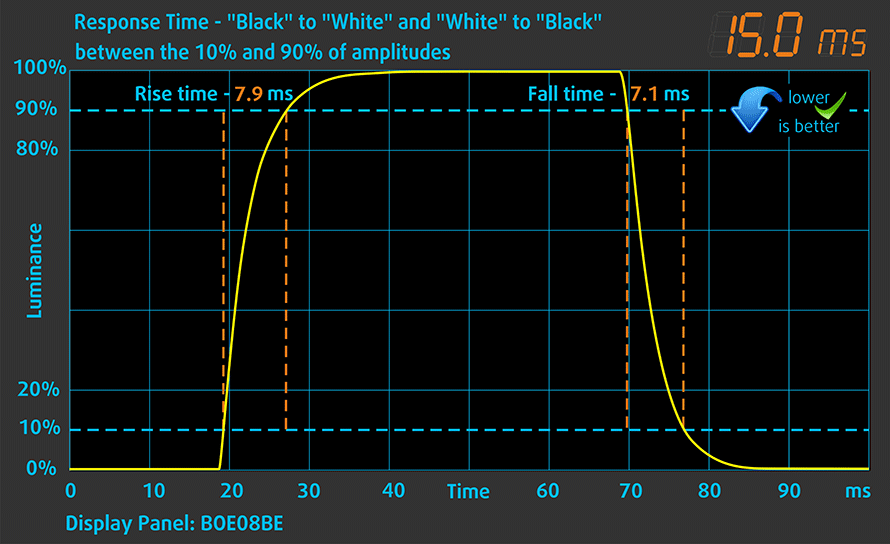
Health impact – PWM / Blue Light
PWM (Screen flickering)
Pulse-width modulation (PWM) is an easy way to control monitor brightness. When you lower the brightness, the light intensity of the backlight is not lowered, but instead turned off and on by the electronics with a frequency indistinguishable to the human eye. In these light impulses, the light/no-light time ratio varies, while brightness remains unchanged, which is harmful to your eyes. You can read more about that in our dedicated article on PWM.
ASUS TUF A17 (FA706)’s screen uses a panel that doesn’t use PWM to adjust its brightness. This ensures that the display is safe for use for long periods of time.
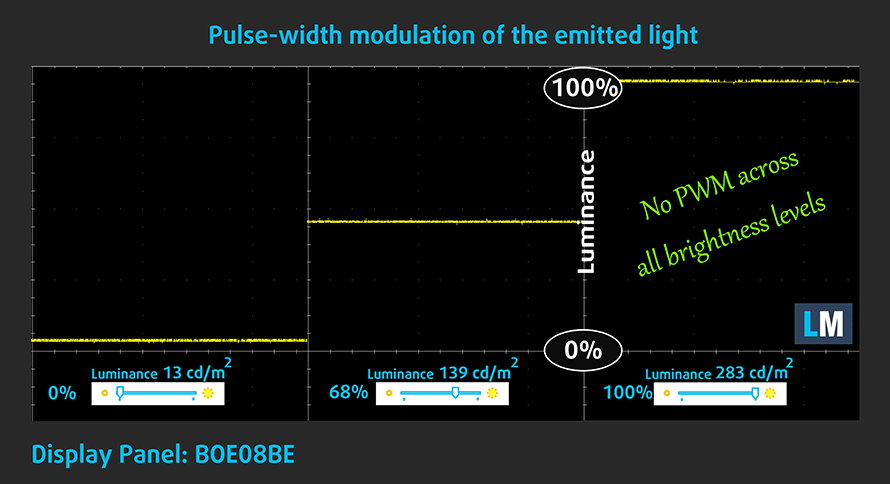
Blue light emissions
Installing our Health-Guard profile not only eliminates PWM but also reduces the harmful Blue Light emissions while keeping the colors of the screen perceptually accurate. If you’re not familiar with the Blue light, the TL;DR version is – emissions that negatively affect your eyes, skin, and your whole body. You can find more information about that in our dedicated article on Blue Light.
Conclusions
ASUS TUF A17 (FA706)’s 17-inch display has an IPS panel with a Full HD resolution. Its contrast is good, viewing angles – comfortable, and its backlight doesn’t use PWM at any brightness level. Additionally, the 120Hz refresh rate is paired with a relatively fast response time. Sadly, its biggest disadvantage is the narrow color coverage of just 52% of sRGB.
Buy our profiles
Since our profiles are tailored for each individual display model, this article and its respective profile package are meant for ASUS TUF A17 (FA706) configurations with 17.3″ BOE NV173FHM-NX1 (BOE08BE) (FHD, 1920 × 1080) IPS.
*Should you have problems with downloading the purchased file, try using a different browser to open the link you’ll receive via e-mail. If the download target is a .php file instead of an archive, change the file extension to .zip or contact us at [email protected].
Read more about the profiles HERE.
Además de recibir perfiles eficientes y respetuosos con la salud, al comprar los productos de LaptopMedia también apoyas el desarrollo de nuestros laboratorios, donde probamos los dispositivos para elaborar las reseñas más objetivas posibles.

Trabajo de oficina
El perfil Trabajo de Oficina debería ser utilizado sobre todo por usuarios que pasan la mayor parte del tiempo mirando trozos de texto, tablas o simplemente navegando. Este perfil pretende ofrecer una mayor nitidez y claridad manteniendo una curva de gamma plana (2,20), una temperatura de color nativa y colores perceptualmente precisos.

Diseño y juego
Este perfil está dirigido a los diseñadores que trabajan con los colores de forma profesional, y también para juegos y películas. Design and Gaming lleva a los paneles de visualización a sus límites, haciéndolos tan precisos como sea posible en el estándar sRGB IEC61966-2-1 para Web y HDTV, en el punto blanco D65.

Salud-Guardia
Salud-Guardia elimina la perjudicial Modulación de Ancho de Pulso (PWM) y reduce la luz azul negativa que afecta a nuestros ojos y a nuestro cuerpo. Al estar adaptado a cada panel, consigue mantener los colores perceptivamente precisos. Salud-Guardia simula el papel, por lo que la presión sobre los ojos se reduce considerablemente.
Consigue los 3 perfiles con un 33% de descuento
Sound
ASUS TUF A17 (FA706)’s speakers produce a relatively quiet sound with decent quality. However, there are deviations throughout the entire frequency range.
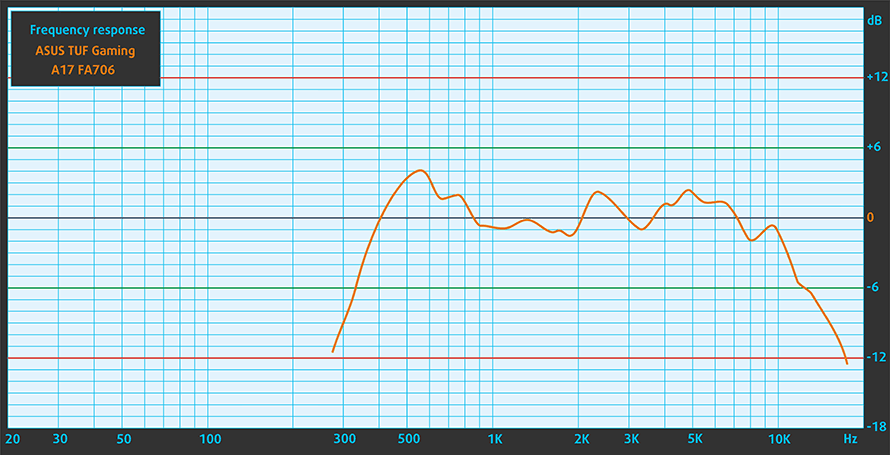
Drivers
All of the drivers and utilities for this notebook can be found here: https://www.asus.com/Laptops/ASUS-TUF-Gaming-A17/HelpDesk_Download/
Battery
Now, we conduct the battery tests with Windows Better performance setting turned on, screen brightness adjusted to 120 nits, and all other programs turned off except for the one we are testing the notebook with.
Para simular las condiciones de la vida real, utilizamos nuestro propio script de navegación automática por más de 70 sitios web.
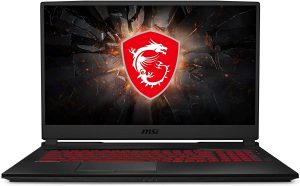
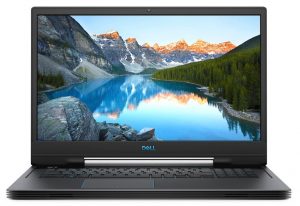
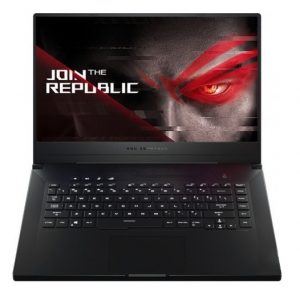
Para cada prueba de este tipo, utilizamos el mismo vídeo en HD.



CPU options
ASUS offers this device with two impressive 7nm processor variants. The less potent one is the AMD Ryzen 5 4600H. It is a six-core, twelve-thread unit with a base clock of 3.00 GHz and a Max Boost of 4.00 GHz. However, the star of the show here is the Ryzen 7 4800H with its 8 cores and 16 threads. It has a slightly lower base clock of 2.90 GHz, but the Max Boost is a little bit higher – 4.20 GHz. Both of them are 45W units, so they fare pretty well with their Intel opponents.
GPU options
In terms of graphics cards, there is the GTX 1650 with 4GB of GDDR6 memory, the GTX 1650 Ti with the same amount and type of memory, and the GTX 1660 Ti, equipped with 6GB of GDDR6 VRAM.
Gaming tests
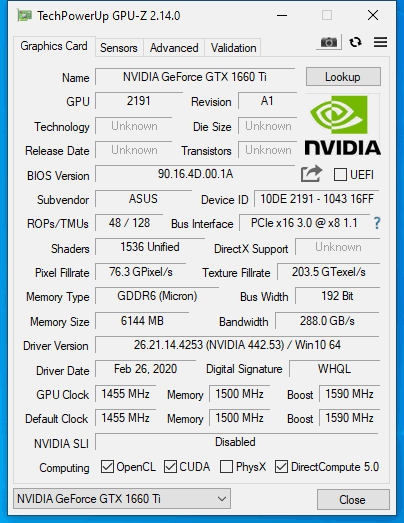

| Far Cry 5 | Full HD, Normal (Check settings) | Full HD, High (Check settings) | Full HD, Ultra (Check settings) |
|---|---|---|---|
| NVIDIA GeForce GTX 1660 Ti | 92 fps | 87 fps | 83 fps |

| Rise of the Tomb Raider (2016) | Full HD, Medium (Check settings) | Full HD, Very High (Check settings) | Full HD, MAX (Check settings) |
|---|---|---|---|
| NVIDIA GeForce GTX 1660 Ti | 113 fps | 64 fps | 42 fps |

| Tom Clancy’s Ghost Recon Wildlands | Full HD, High (Check settings) | Full HD, Very High (Check settings) | Full HD, Ultra (Check settings) |
|---|---|---|---|
| NVIDIA GeForce GTX 1660 Ti | 74 fps | 66 fps | 44 fps |

| Shadow of the Tomb Raider (2018) | Full HD, Medium (Check settings) | Full HD, High (Check settings) | Full HD, Highest (Check settings) |
|---|---|---|---|
| NVIDIA GeForce GTX 1660 Ti | 83 fps | 79 fps | 50 fps |
Temperatures and comfort
Max CPU load
In this test we use 100% on the CPU cores, monitoring their frequencies and chip temperature. The first column shows a computer’s reaction to a short load (2-10 seconds), the second column simulates a serious task (between 15 and 30 seconds), and the third column is a good indicator of how good the laptop is for long loads such as video rendering.
Average core frequency (base frequency + X); CPU temp.
| AMD Ryzen 7 4800H (45W TDP) | 0:02 – 0:10 sec | 0:15 – 0:30 sec | 10:00 – 15:00 min |
|---|---|---|---|
| ASUS TUF A17 (FA706) | 3.62 GHz (B+25%) @ 69°C | 3.44 GHz (B+19%) @ 76°C | 2.93 GHz (B+1%) @ 71°C |
Since this is the first laptop we test with the Ryzen 7 4800H, we have nothing to compare this device with. However, it is good to see that the temperatures of the processor, itself, are very well maintained, and after 15 minutes of stress testing, the frequency is almost 3.00 GHz for all cores (still above the base) with a temperature of just 71C.
Real-life gaming
| NVIDIA GeForce GTX 1660 Ti | GPU frequency/ Core temp (after 2 min) | GPU frequency/ Core temp (after 30 min) | GPU frequency/ Core temp (max fans) |
|---|---|---|---|
| ASUS TUF A17 (F706) | 1667 MHz @ 77°C | 1666 MHz @ 79°C | – |
| MSI GL75 | 1714 MHz @ 66°C | 1708 MHz @ 68°C | 1726 MHz @ 62°C |
| Lenovo Legion Y7000 (2019) | 1669 MHz @ 66°C | 1646 MHz @ 71°C | – |
| Lenovo Legion Y540 | 1761 MHz @ 76°C | 1752 MHz @ 82°C | – |
| Acer Nitro 5 (AN515-54) | 1660 MHz @ 78°C | 1635 MHz @ 84°C | – |
While the GPU test shows the real thermal capacity of the cooling, we found that it is perfectly capable of maintaining high clocks. Although, they are some 50 MHz lower than the MSI Gl75 and with temperatures well above 10C higher.
Comfort during full load
Not only the internals are quite warm during gameplay, but the noise is really high. I mean, the laptop is very close to vacuuming itself to the desk. At least the chassis temperature is lower than 50C, which is warm, but not too much. A good decision from ASUS was to allow the fans to take fresh air through the keyboard, which considerably lowers the temperatures on the left and the right side of the base.
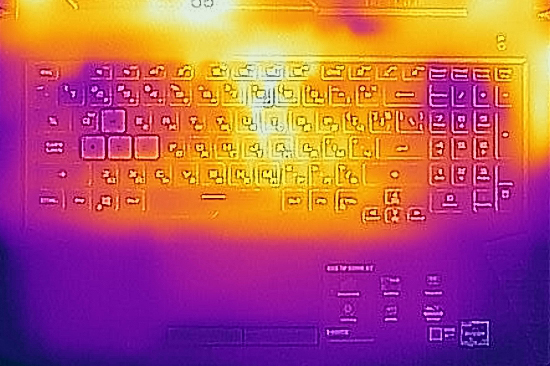
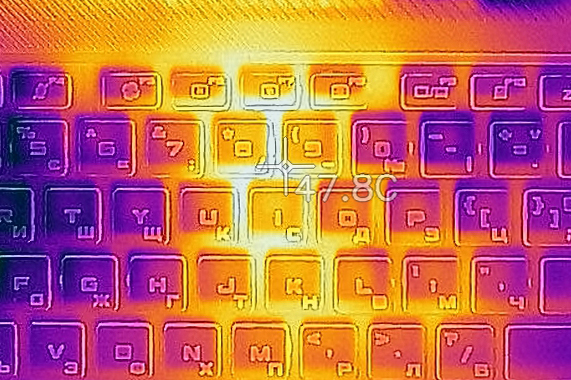
Verdict
 Although the TUF A17 is pretty much an ordinary 17-inch gaming laptop, it has two very convincing selling points. The first one is the price. There is no other 17-incher at this price (currently) that has an 8-core processor and a GTX 1660 Ti. Period. The price/performance ratio here is on point. And speaking of performance… All hail the new CPU king. This processor is marginally faster even than the Core i9-9900K, placed inside of the Alienware Area-51m. Yep, a mobile processor comfortably beats a desktop one, having the same core count.
Although the TUF A17 is pretty much an ordinary 17-inch gaming laptop, it has two very convincing selling points. The first one is the price. There is no other 17-incher at this price (currently) that has an 8-core processor and a GTX 1660 Ti. Period. The price/performance ratio here is on point. And speaking of performance… All hail the new CPU king. This processor is marginally faster even than the Core i9-9900K, placed inside of the Alienware Area-51m. Yep, a mobile processor comfortably beats a desktop one, having the same core count.
Indeed, the 7nm process that AMD is currently building their processor on is providing the TUF A17 (FA706) to genuinely run above 3 GHz on all cores in very high load for a long period of time. Not only does the laptop post an extremely high CPU performance, but it is able to cool it down quite easily. In Prime95 (which stresses your processor more than anything out there) we got a maximum temperature of 76C… 76C on a laptop with an 8-core processor. Honestly, we can’t stress it enough.
Of course, a gaming device is not only a processor. It has memory, storage, a graphics card, and more. As this notebook maxes out with a GeForce GTX 1660 Ti, you shouldn’t expect a flagship-level of performance. However, still, most of the latest games can be played at maximum settings at 1080p with a decent frame rate. And if your gaming library is larger than your bookcase – you can put two M.2 PCIe drives, as well as a single 2.5″ SATA drive, matching what Acer offered last year with their Triton, Nitro, and Helios brands.
As of the screen, ASUS TUF A17 (FA706)’s 17-inch display has an IPS panel with a Full HD resolution. Its contrast is good, viewing angles – comfortable, and its backlight doesn’t use PWM at any brightness level. Additionally, the 120Hz refresh rate is paired with a relatively fast response time. Sadly, its biggest disadvantage is the narrow color coverage of just 52% of sRGB.
Indeed, the laptop has some shortcomings like no Thunderbolt connection (although the USB Type-C port can output a DisplayPort signal), and an SD card reader. Additionally, we were not really impressed by the 48Wh battery, as it delivered around 7 hours of Web browsing and 6 hours of video playback. However, ASUS offers this device with a larger – 90Wh battery pack. And while we are not really sure, it is possible that this eliminates the 2.5″ SATA drive bay.
So, when it comes to the purpose of the device, should it be gaming, or a professional one, it is totally up to you. If you are into gaming comfort, probably you would want to go for something like the MSI GL75, which runs significantly cooler on the graphics card. However, if processor-intensive tasks, like rendering 3D models or editing videos, then the TUF A17 is a no-brainer.
Pros
- Great price/performance ratio
- Good keyboard with decent travel, clicky feedback, and an RGB backlight
- Packs one of the most powerful mobile chips out there
- There are two M.2 PCIe slots, one 2.5″ SATA drive bay and two RAM SODIMM slots in dual channel
- The display doesn’t flicker at any brightness level (AUO B173HAN04.7)
- Has a good contrast ratio and comfortable viewing angles (AUO B173HAN04.7)
- Can be purchased with a 120Hz screen with a quick response time
Cons
- Lacks an SD card reader and Thunderbolt support
- It gets pretty loud under load
- Covers only 52% of sRGB (AUO B173HAN04.7)
You can check the prices and configurations in our Specs System: https://laptopmedia.com/series/asus-tuf-gaming-a17-fa706/
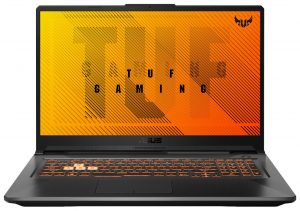
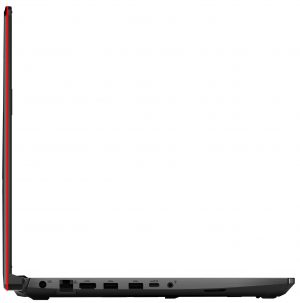
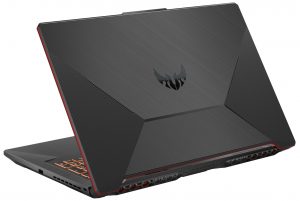

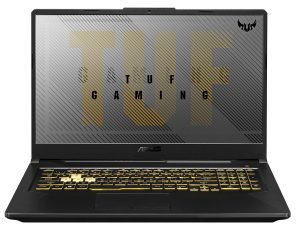
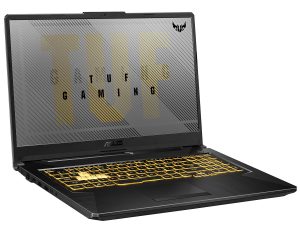
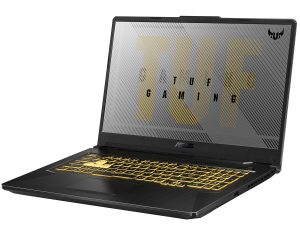
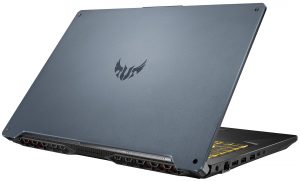
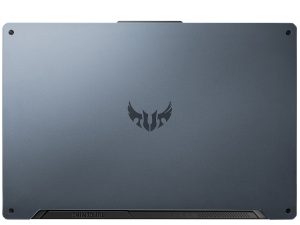
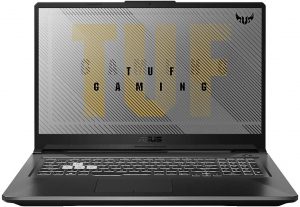
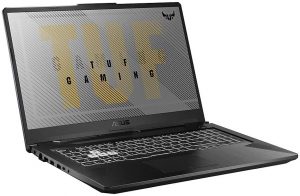
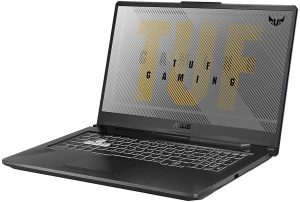
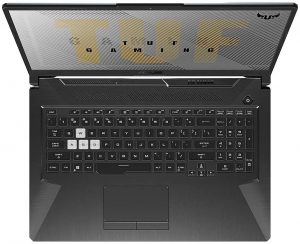


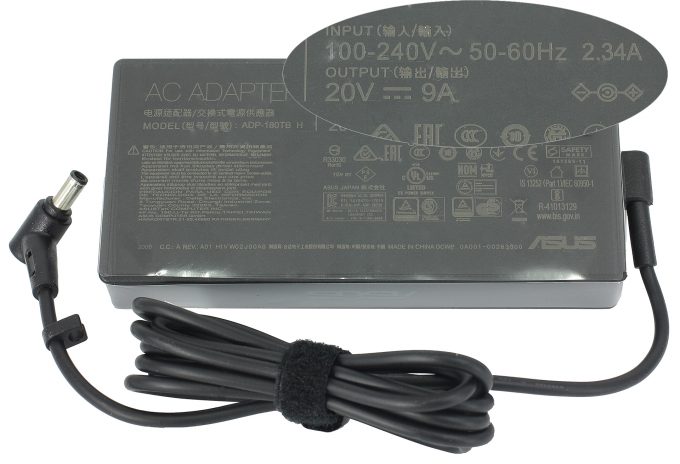

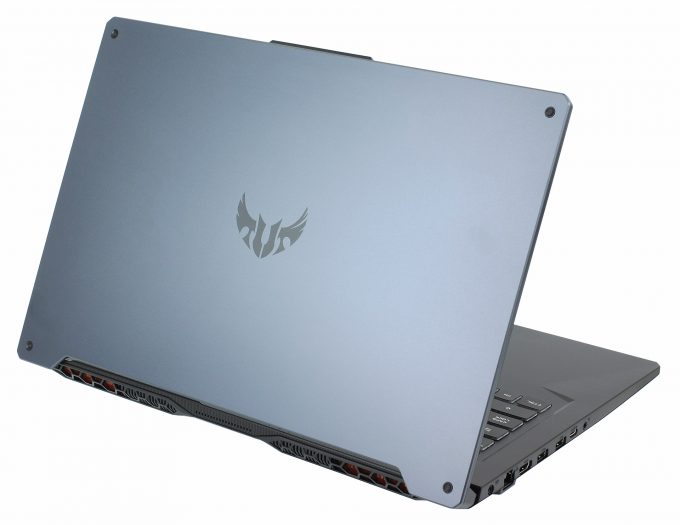
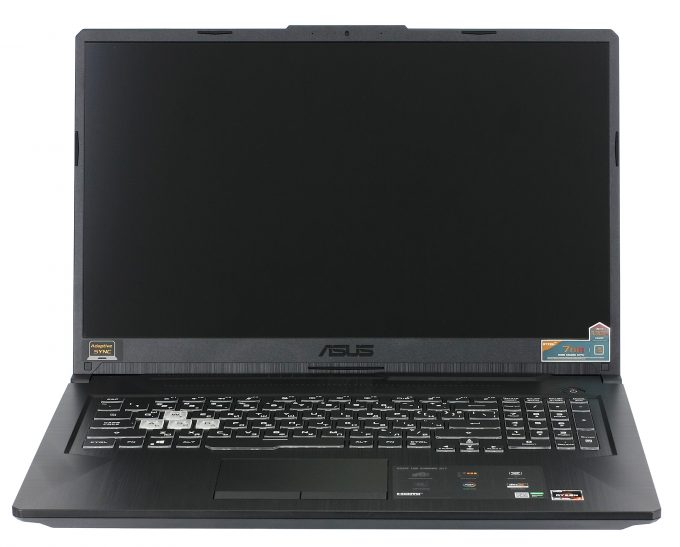
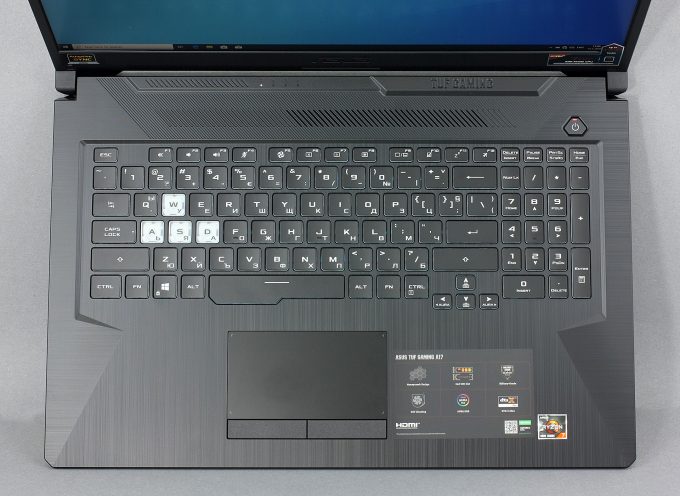
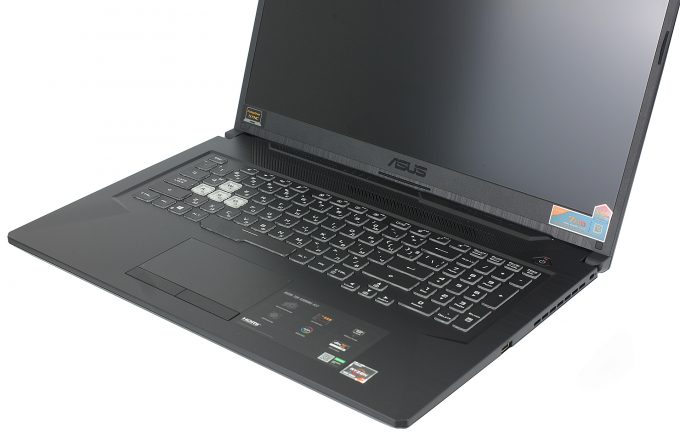
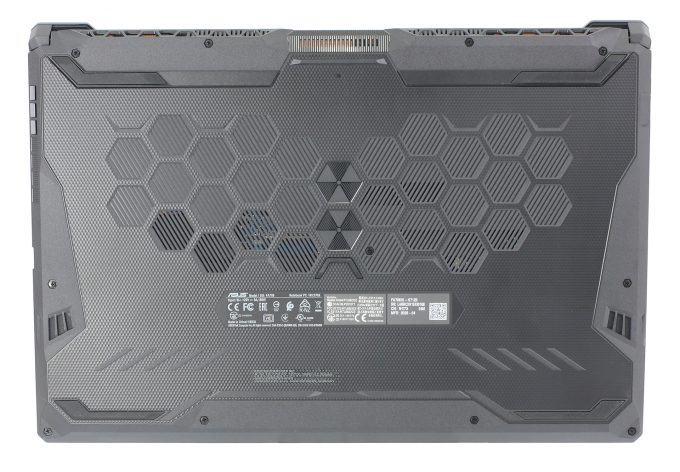


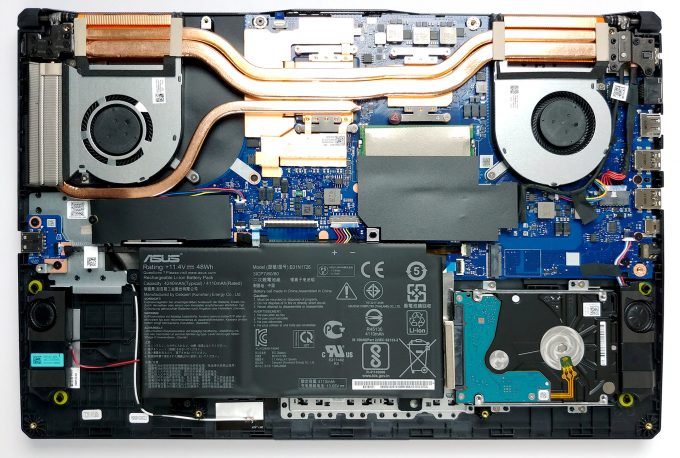

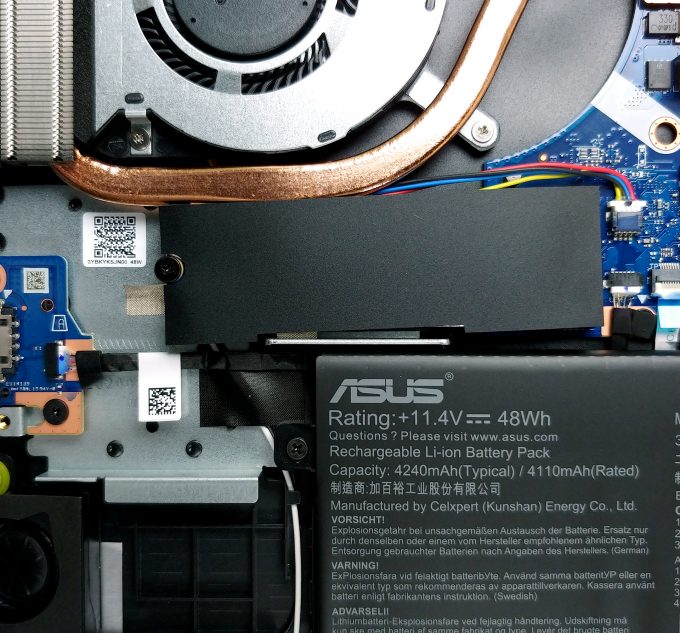
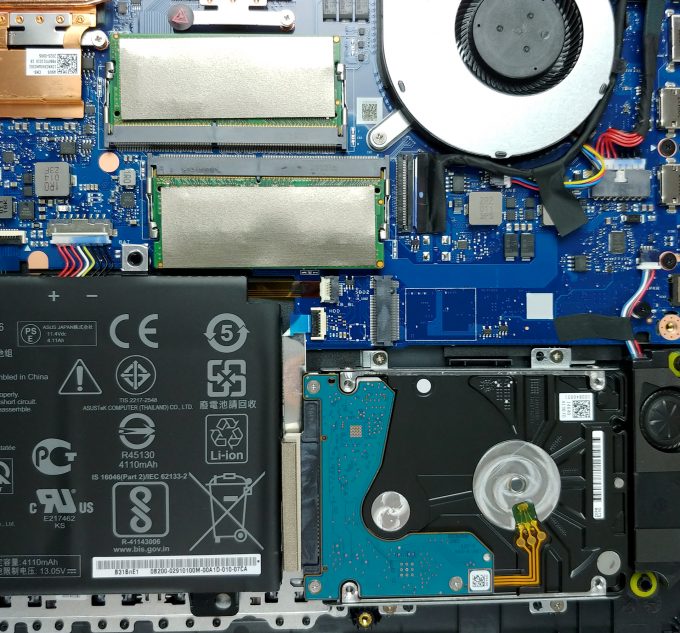
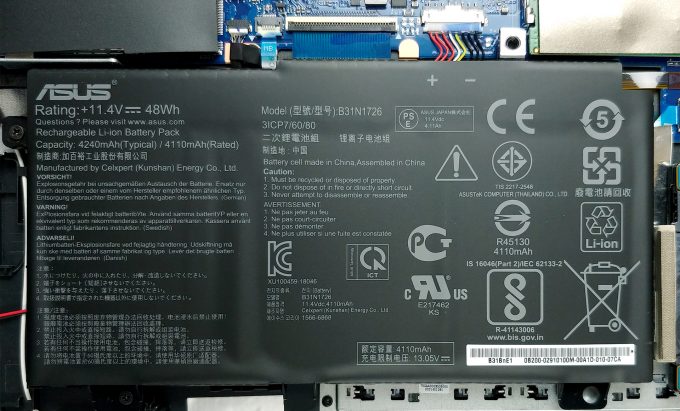
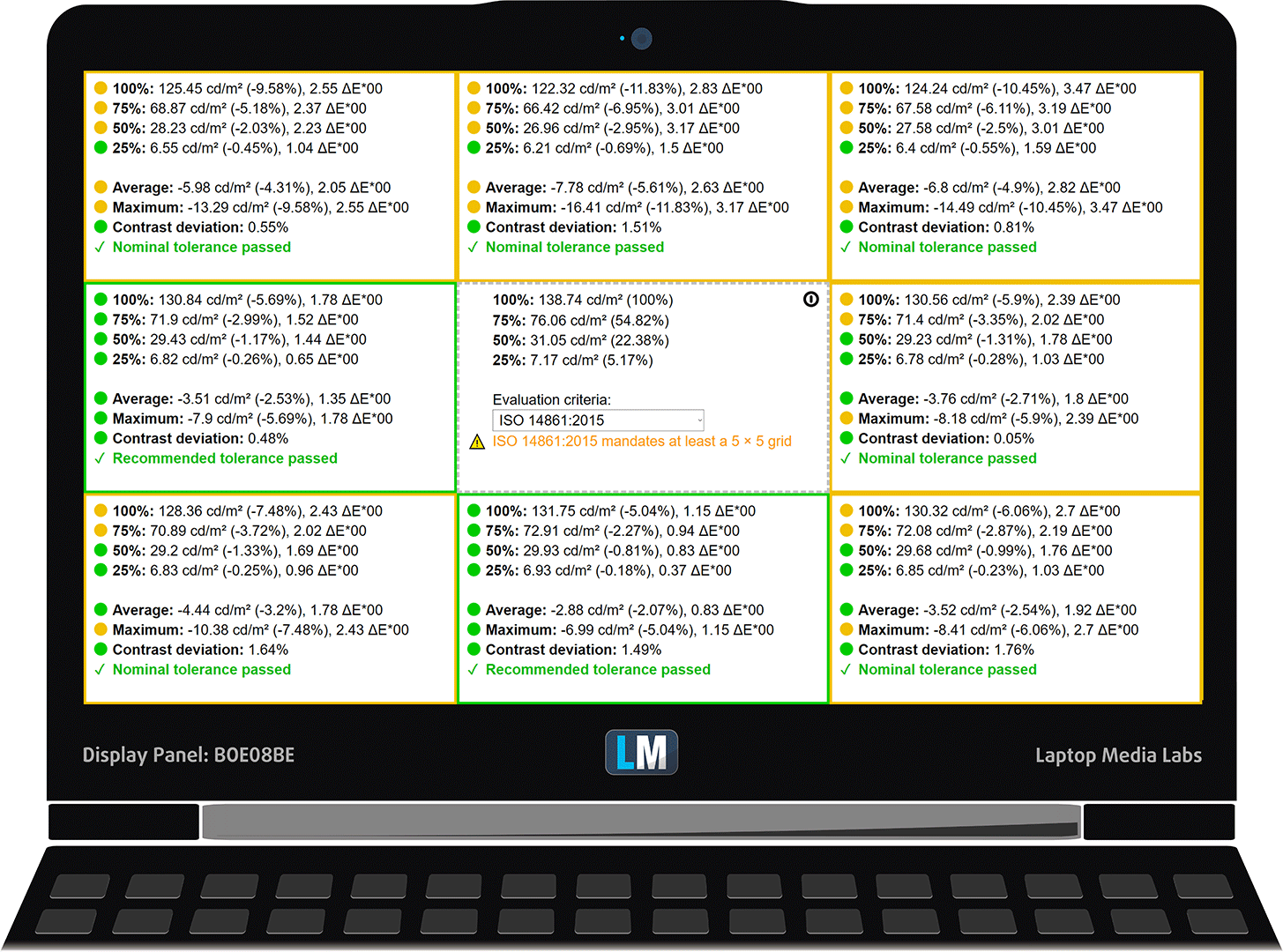

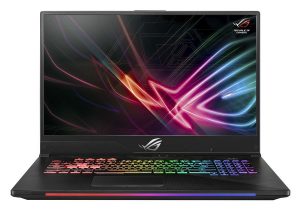
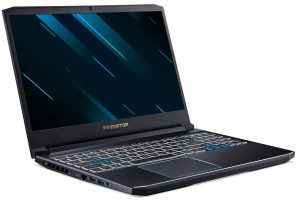








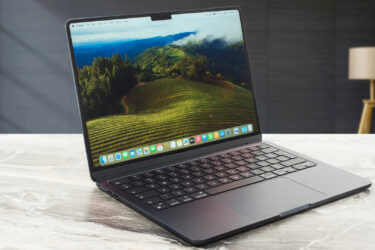
and it attracts fingerprints as much as Dwayne Johnson attracts trouble in pretty much all of his movies
that line made my day
Anyway i expect more info and testing of the 4800H,i am sure A LOT of people are interested.
No doubt. This gaming monster is sold out every which way.
Have it, ran all over city to get it but found and bought it. Nice rig.
where are you from if you dont mind me asking and hm was it
ty in advance
This site is great… but 2 things are crazy strange:
1. You sell display profiles… you have many rankings but not ranking by quality of display (colour coverage etc)… It should be ranking by display for gamers, for graphic designers…
2. It wi be great to have option to add display upgrade option for each laptop/display..